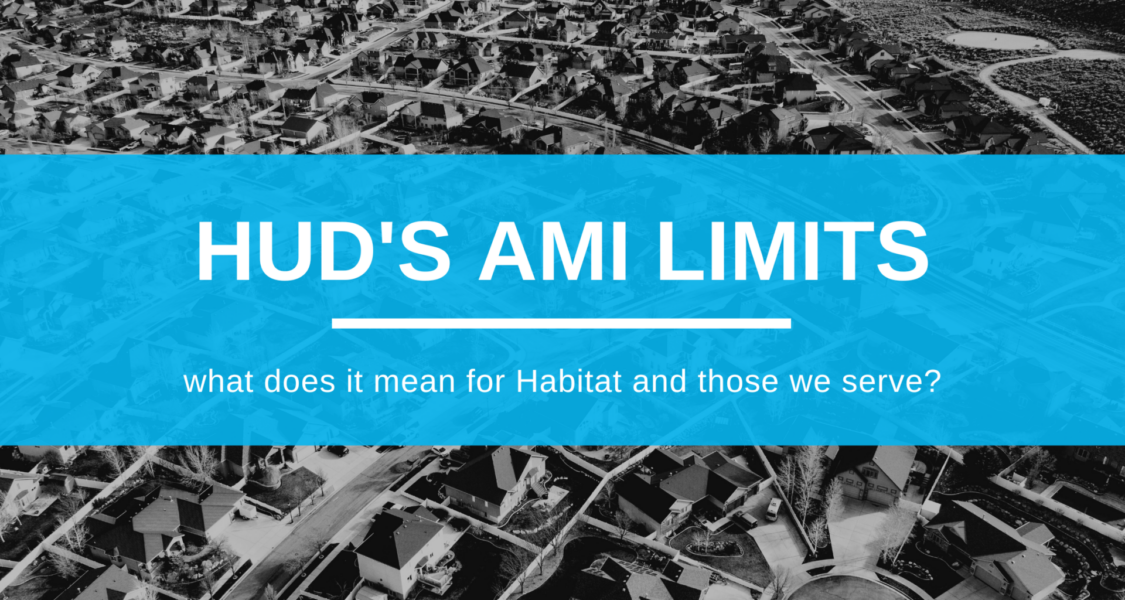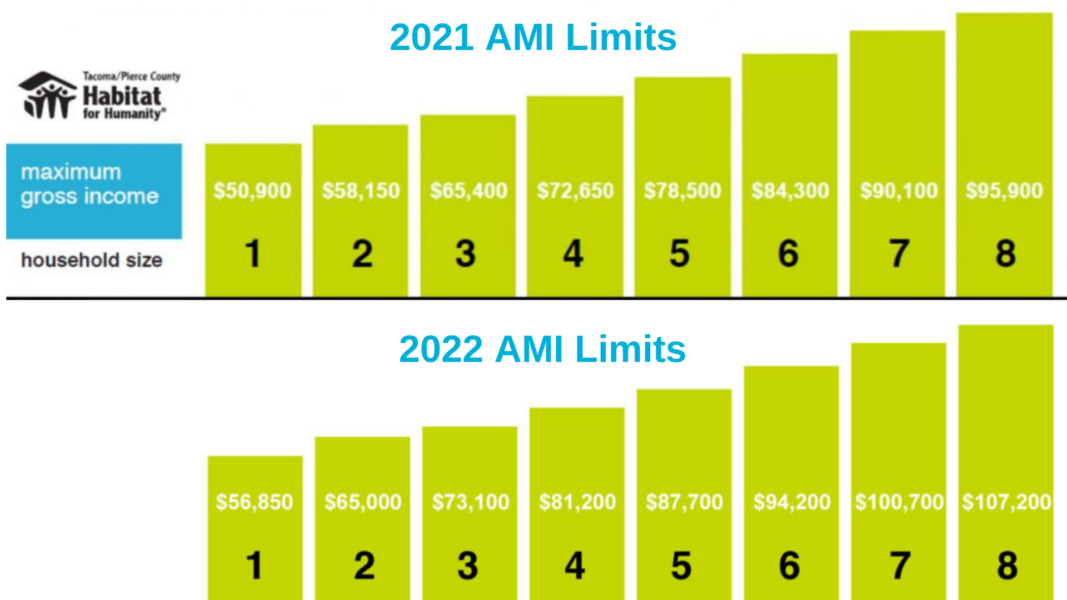Blog
- Home
- >
- Who We Are
- >
- Blog
- >
- AMI Limits
AMI Limits

As they do each summer, the Department of Housing and Urban Development (HUD) released the new Area Median Income (AMI) limits and rather than incremental change as we are accustomed to seeing, the numbers this year took big leaps across the board.
This certainly impacts Tacoma Habitat’s clients, as AMI is one of the qualifiers across all of our programs. And one thing we know for certain is that the people we serve haven’t experienced the kind of income bump the new AMI limits reflect; the people that have been struggling in this economy for the last few years continue to struggle. Rents keep going up and housing costs remain high.
So, if wages are indeed stagnant for low to moderate income households in Pierce County, how does this AMI shift happen?

The answer is more simple than you might think. The hot housing market combined with society’s newfound acceptance and adoption of remote work have created a movement toward Pierce County from other more affluent zip codes. Example: according to realtor.com, the median home sale price for King County in July of 2022 was $900,00 compared to Pierce County, which was $575,000. When King County residents move south to get more for their housing dollar, their income levels impact our AMI data and create the illusion that Pierce County residents are seeing a leap in their earnings.
It seems harmless enough until you consider how much hangs on those AMI figures, including Section 8 housing vouchers and fair market rents, and many other community programs that say someone has to be at “x” percent of AMI to receive services. Tacoma Habitat uses AMI as part of our eligibility criteria too, as doing so opens up the potential for federal funding and down payment assistance for Habitat homebuyers.
The National Low Income Housing Coalition published its annual Out of Reach report in July, which named Washington as having the 6th highest housing wage in the country. The report shows that it takes 2.2 full-time jobs at minimum wage to afford the fair market rent of $1,629 on a 2-bedroom apartment. The data also tells us that an affordable rent at minimum wage would be $753 per month.
Another interesting point of data from the Washington State Employment Security Department: the median hourly wage in 2020 was $26.48/hour and in 2021 it increased to $27.35. This hardly justifies the increase in the AMI limits. Circling back to the Out of Reach Report, the median renter income in Washington in 2022 is $59,466, which is $28 per hour.
If you’re working at minimum wage, there’s no way to rent a house or apartment much less purchase a home. Not even with a great program like Tacoma Habitat. If we look at an average Habitat home—priced at $281,000*—a buyer household would have to earn $6,700 per month in order for that mortgage to be affordable. On a single income, that’s $41 per hour.
No matter how you cut it or which report you’re reading, the bottom line is, housing is still out of reach. And for Tacoma Habitat, that is the real story behind the new AMI limits.
*Habitat homebuyers often have access to Down Payment Assistance programs, which further decreases the sale price and helps make homeownership affordable.
